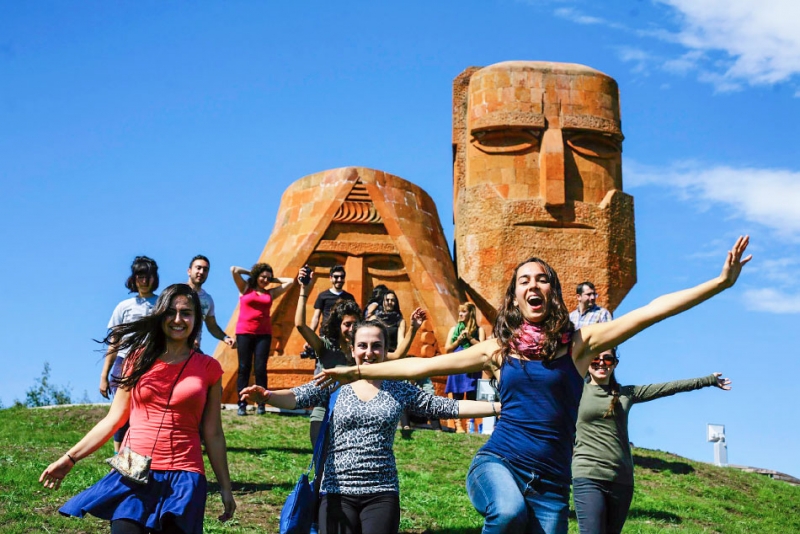Artsakh (Nagorno-Karabakh) is one of 15 provinces of historical Armenia. Armenians have lived on this land for millenniums. This fact is proven both by old and contemporary historians and thousands of Christian monuments and churches spread all over Artsakh. Throughout history Artsakh always had to protect itself from foreign invaders. After the 1917 revolution in Russia, as a result of Stalin's "Divide to Rule" policy Artsakh was forcefully attached to Azerbaijani Soviet Republic as an autonomous province. Artsakh became a part of the Soviet Union. During the soviet days Azerbaijan has practiced all possible means to free Artsakh from Armenians and to destroy Armenian cultural monuments, which prove that Armenians have lived here for thousands of years. However, Azerbaijan failed to complete this plan.
On February 20, 1988, the Armenian population of Nagorno-Karabakh officially demanded reunification with Armenia. This action was supported by peaceful mass demonstrations in Armenia. The Karabakh Movement commenced, which was unprecedented not only in the Soviet Union, but also in the Socialist countries of Eastern Europe and the rest of the communist world. By the fifth day of the demonstrations, about one million people (i.e. about one-third of Armenia's population) were gathered in and around the Freedom Square in Yerevan. People stood there for eight consecutive days, demanding peacefully and lawfully to rectify the injustice imposed upon Armenia by the authorities of Bolshevik Russia at the beginning of the 20th century, i.e. the unlawful decision of the Communist Party on forcefully annexing to Azerbaijan a part of Armenia - Karabakh. Democracy won a great victory in Armenia. Soviet totalitarianism was unable to extinguish people's wish to live freely. This first powerful wave of democracy quickly spread over the rest of the Soviet Union, and soon expanded to other communist countries. The Berlin Wall collapsed and Germany reunited. Nevertheless, Armenia and Karabakh long had to struggle to reunite, and are struggling up to this very day, in order for the international community to recognize the reunification that has de-facto taken place. On December 10, 1991 the population of Artsakh held a democratic referendum and declared independence. The Republic of Nagorno-Karabagkh was established.
The peaceful and legal demonstrations of Armenians in Artsakh and in Yerevan were responded by bloody massacres of Armenians in Sumgait and Baku cities in Azerbaijan. These massacres were organized and supported by Azerbaijan government, and these massacres reminded Armenians and the whole world about the Armenian Genocide in Turkey in 1915. Azerbaijan attacked Artsakh, thousands of innocent people were killed and as a result Armenians were forced to undertake defensive measures. Thus the Karabakh war started. As Armenians were protecting their motherland, the whole population of Artsakh was engaged in defense activities. Armenia obviously supported Artsakh in the war. Although Armenian troops were smaller in number, they succeeded to win.
In 1994 a ceasefire was signed between Armenia, Armenian forces of Artsakh and Azerbaijan. The ceasefire is maintained up to date.
Today's Nagorno-Karabakh (Artsakh) is a de facto independent country which is closely tied to Republic of Armenia. Nagorno-Karabakh gets humanitarian assistance from the United States of America and of course, from Republic of Armenia and Armenian Diaspora. During the past 12 years of peace Artsakh has managed to rehabilitate its economy and social infrastructure, create progressive democratic traditions, reconstruct highways and roads and develop tourism industry. The new young generation that has grown in independent Artsakh consider themselves citizens of an independent and free country and are proud of their parents who have defended it.
Republic of Nagorno-Karabakh
Published in
About Armenia


